26 things you didn't know you could do in America's national parks
Offbeat activities in US national parks
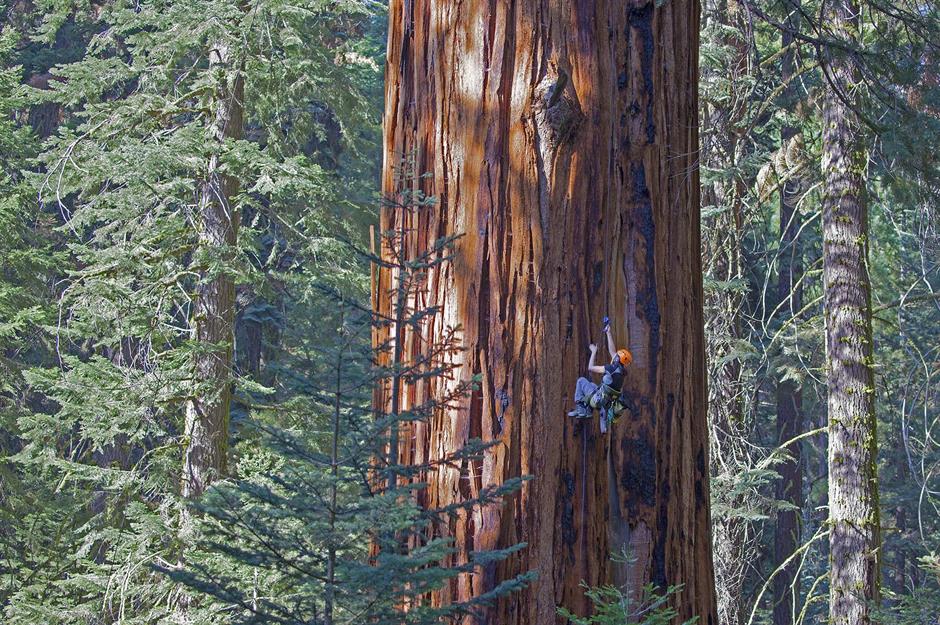
America has a wide range of national parks and hundreds of forests, monuments and reserves, so there are far more outdoor activities on offer than just walking and hiking. From sand-boarding and ice-climbing to snorkelling above shipwrecks and seeing North America's biggest bird, these are the most unusual things to do in the USA's national parks.
Go tide pooling in Washington
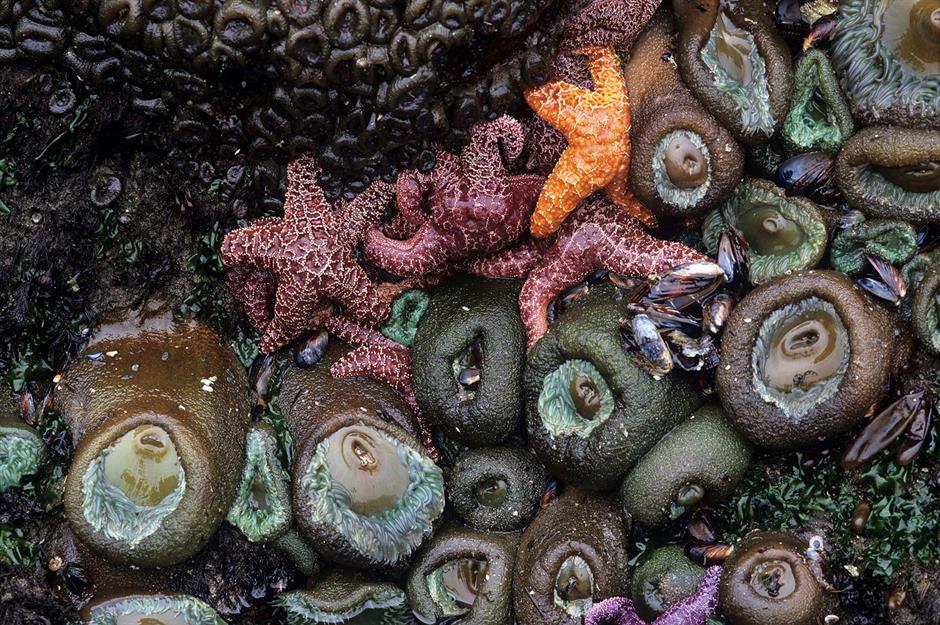
Olympic National Park offers fantastic hiking, climbing and wildlife-watching opportunities, including beloved critters like elk and marmot. But along its coastline is another little-known joy: tide pooling. At low tide, many of the craggy rocks along the park's shores harbour intriguing creatures and fascinating underwater worlds. It's a fantastic activity for the kids to learn about life under the sea, and you can go alone or on one of the ranger-led programmes. Expect to see giant green anenomes, sea stars and rock crabs.
Love this? Follow us on Facebook for travel inspiration and more
Try geocaching in Arizona

Channel your inner pirate and take yourself on a treasure hunt. In the wilds of Arizona's Petrified Forest National Park – a rocky, barren landscape where ancient trees have turned to solid rock – a specially-created geocaching trail makes for a fun day out. Find hidden containers known as geocaches using a GPS device (such as your phone), sign the park's logbook inside and leave a message for the next adventurers. The trail takes you through some of the finest landscapes and geological formations in the park, and can be found using the Geocaching app.
Complete a triathalon in Florida
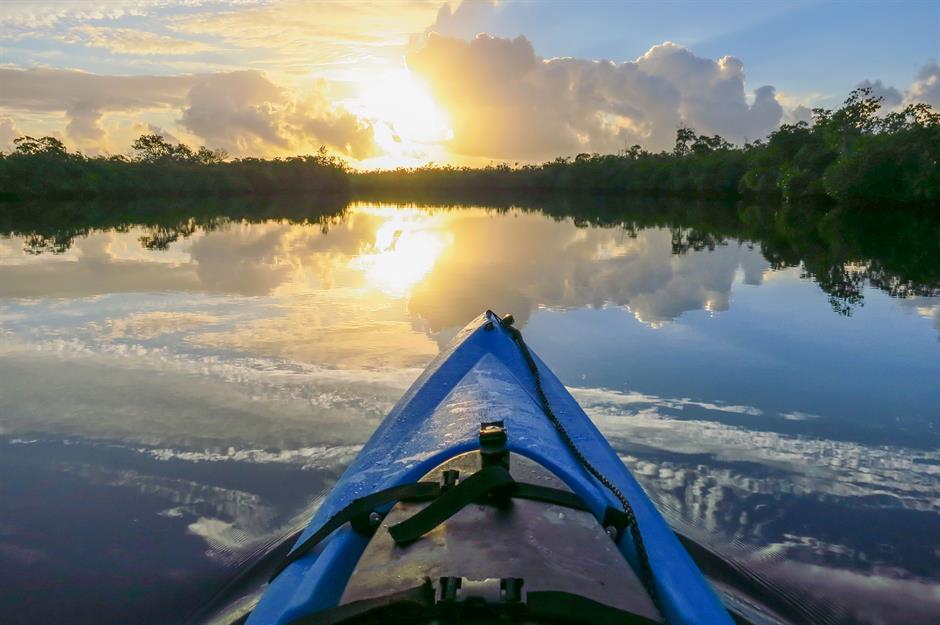
Hiking, cycling and kayaking are common activities in many national parks across America, but only in the Everglades National Park and Big Cypress National Preserve in Florida do they come together to create a thrilling fitness challenge. The Tamiami Trail Triathlon starts with a 15-mile (24km) cycle ride along a loop road from the Shark Valley Visitor Center, then a three-mile (5km) hike on a loop trail from the Oasis Visitor Center. Finally, the water element of this triathlon is done in kayaks – the 3.5-mile (6km) route from the Gulf Coast Visitor Center will take you gliding through the Everglades' serene waterways.
See the largest tree on Earth in California
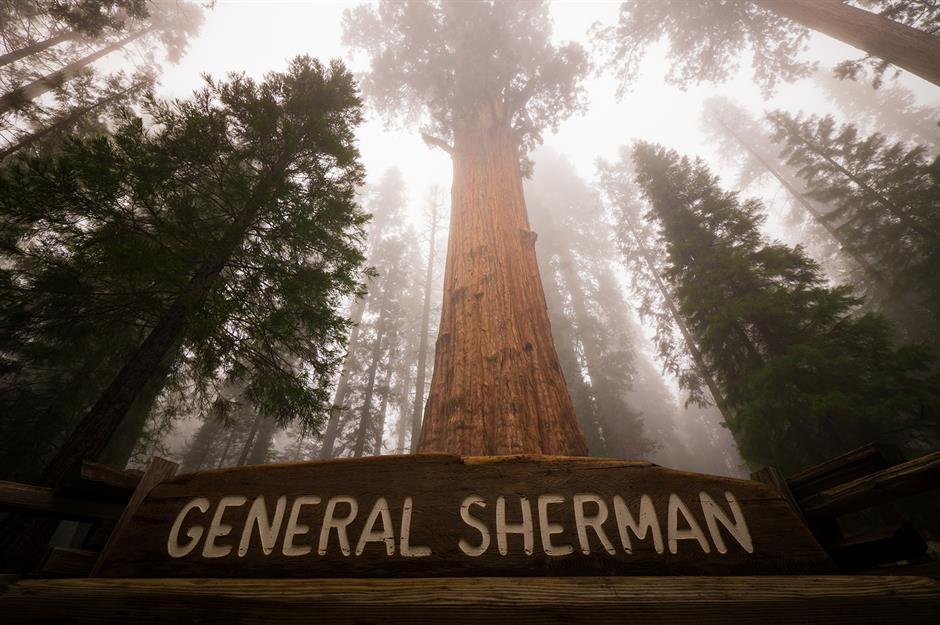
In the Giant Forest in the Sequoia & Kings Canyon National Park, California, the world's largest tree stands tall. Named General Sherman, after an American Civil War general, it has an immense trunk with a circumference of 36 feet (11m) at ground level and 25 feet (8m) at eye level. It stands at almost 275 feet tall (84m) – though it isn't the tallest in the world, that accolade goes to Hyperion in Redwood National Park – and its mass is a total of 2,105 tonnes. Follow the Big Trees Trail to find this beast among other impressive sequoias.
Camp on a beach in Maryland and Virginia
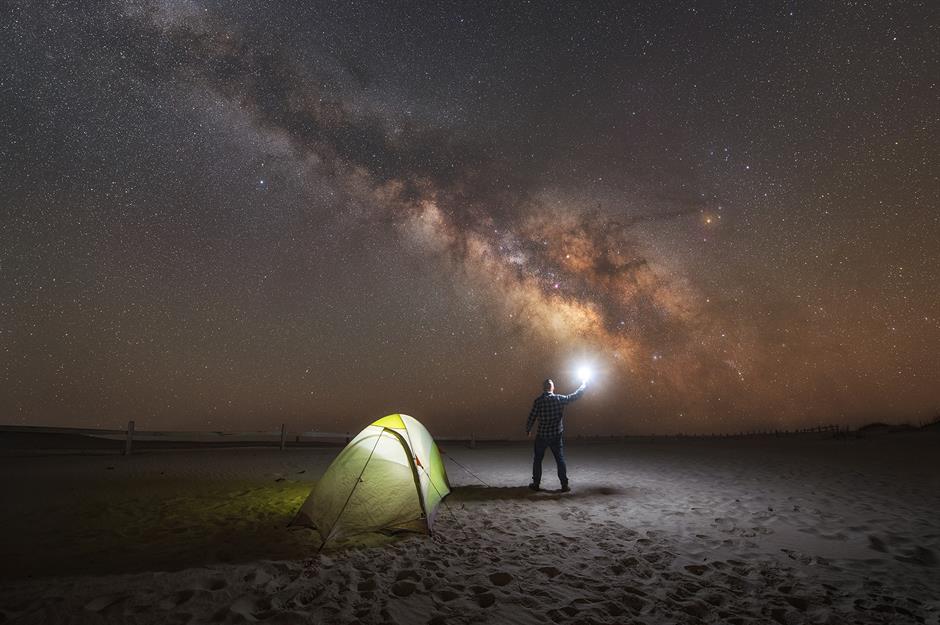
There aren't many places in the US where you can camp on the beach, and for seaside sleeping it doesn't get much better than Assateague Island National Seashore in Maryland and Virginia. The Oceanside Drive-in and Walk-in campsites offer spectacular views out to the ocean for as little as $30 a night, and the soothing soundtrack of waves lapping on the beach is free. Just be sure to note the tidal movements before you pick your pitch...
Take a bath in Texas
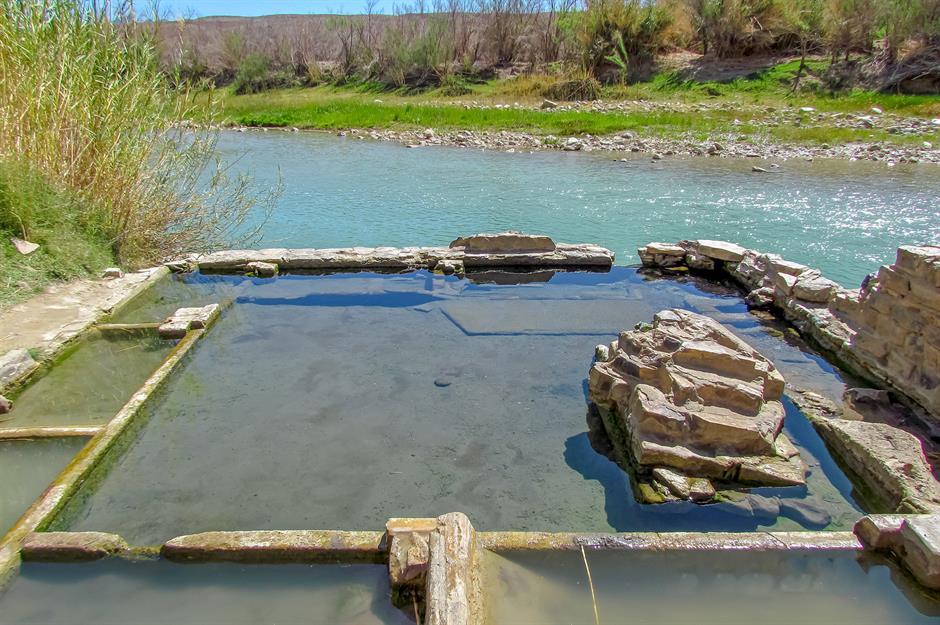
Geothermal activity beneath the surface of the earth is common across America but it's not every day you get to bathe in the warm waters of a hot spring inside a national park. For a special kind of spa break, head to Big Bend National Park in Texas and seek out the Hot Springs Historic District, where you can take a dip inside the foundations of a historic bath house (pictured) right on the shores of the Rio Grande.
Take an art class in California
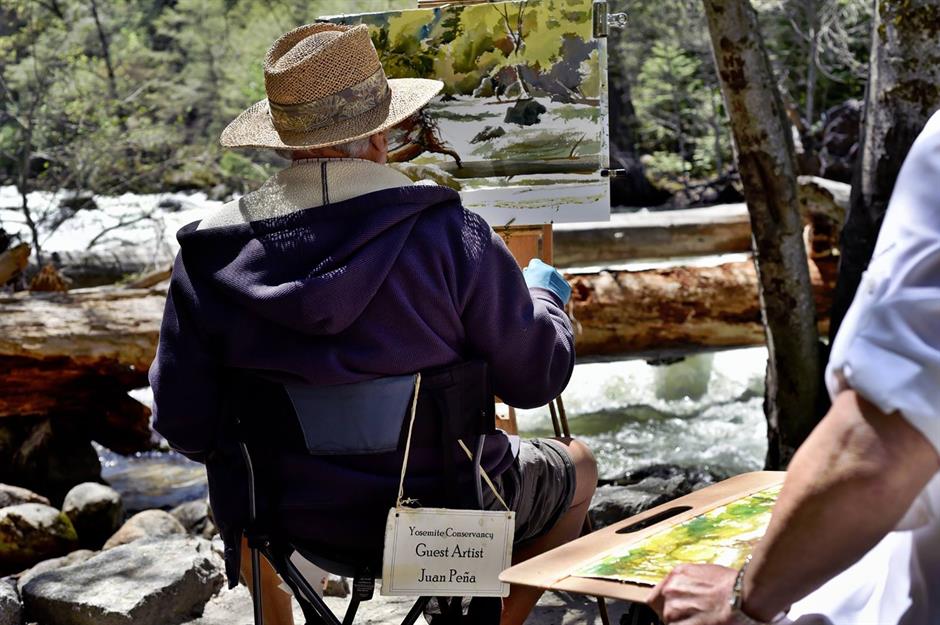
Yosemite has always inspired creatives, from the likes of photographer Ansel Adams to painter Chris Jorgensen. Today, it's still inspiring artists and at the Happy Isles Art and Nature Center there are daily classes from April through October, suitable for all ages from 12 years and up. The classes are run by volunteers and will take you out into the Yosemite wilderness to paint or draw whatever inspires you the most. The Ansel Adams Gallery also runs classes focused on photography.
Discover California's most beautiful small towns and villages
Go dog sledding in Alaska...
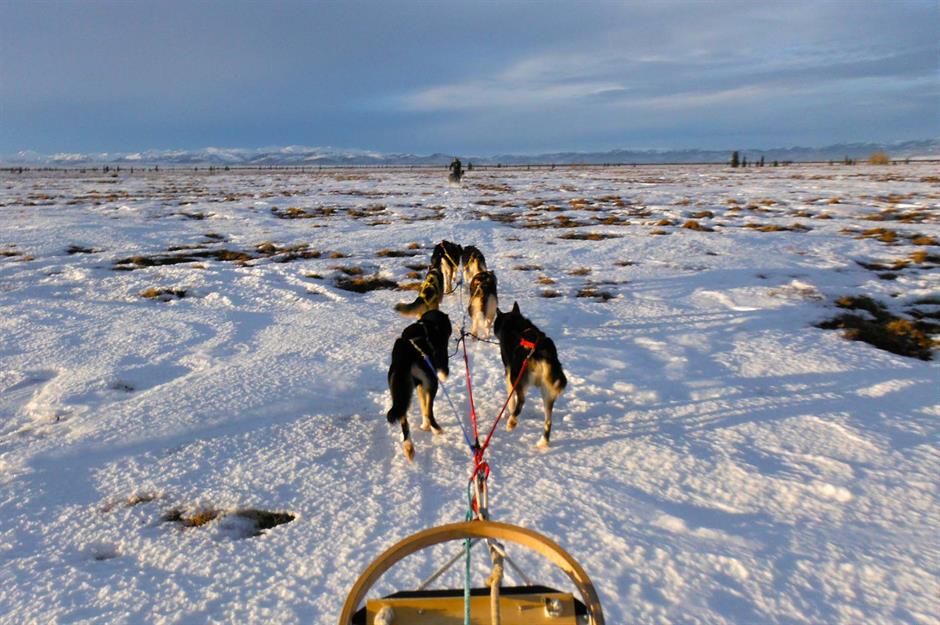
Most people visit national parks in summer when the weather is warm and dry, but head to Denali National Park in Alaska in winter and you'll be in for a treat. Cold weather activities like skiing and snowshoeing are common but perhaps the best part is dog sledding (or mushing). Take the reins and learn to mush a team of energetic huskies, or do overnight tours and stay in cabins across the park.
...or meet a litter of puppies
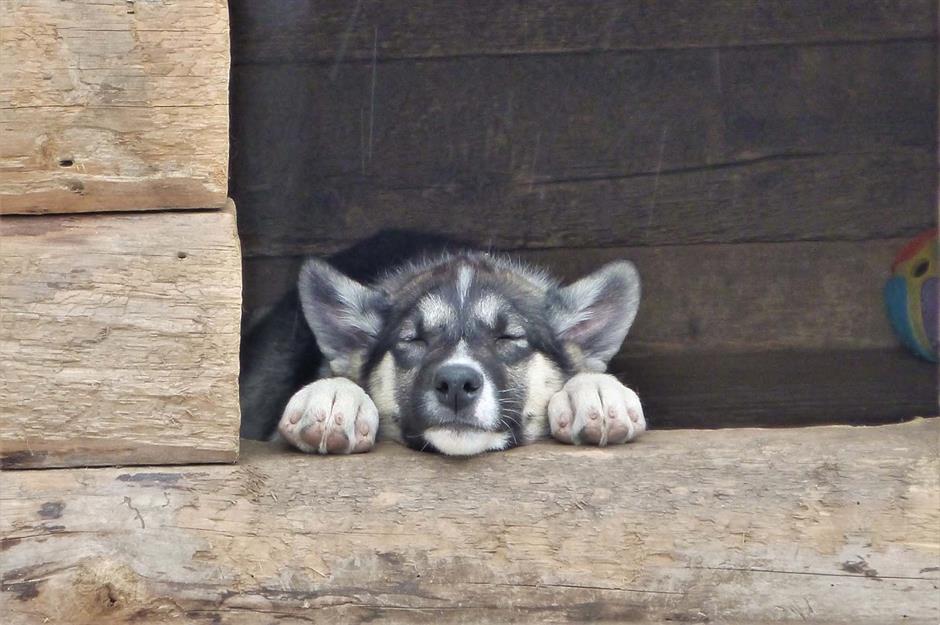
If you're not a thrill-seeker and jumping on a sled isn't your bag, there's still good reason to go to Denali National Park. Most years a new litter of puppies is born to take over from the older dogs that will eventually retire, so come at the right time and you might just meet some mushers-in-training. If you can't make it in time to see the pups, there's a webcam that goes live when the litter is born. Who knew America's national parks could be so cute?
Become a junior ranger across the US
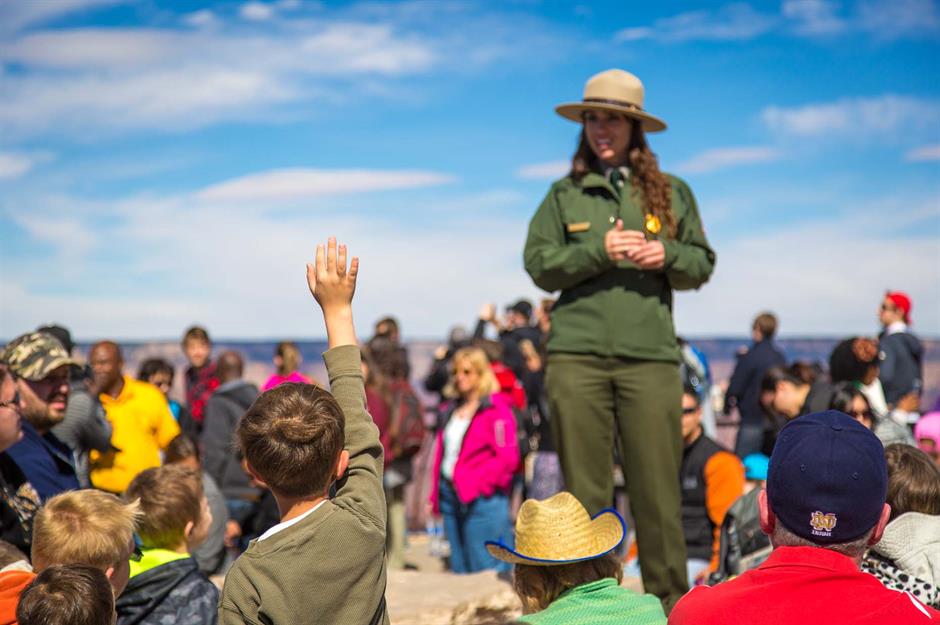
This one's for the kids. Almost all of America's national parks have a junior ranger programme which involves exploring the park with a grown-up ranger, learning about the environment and conservation activities, and answering questions in order to get the official junior ranger certificate. Plus, children will learn the all-important motto: 'Explore. Learn. Protect.'
Climb a waterfall of ice in Michigan
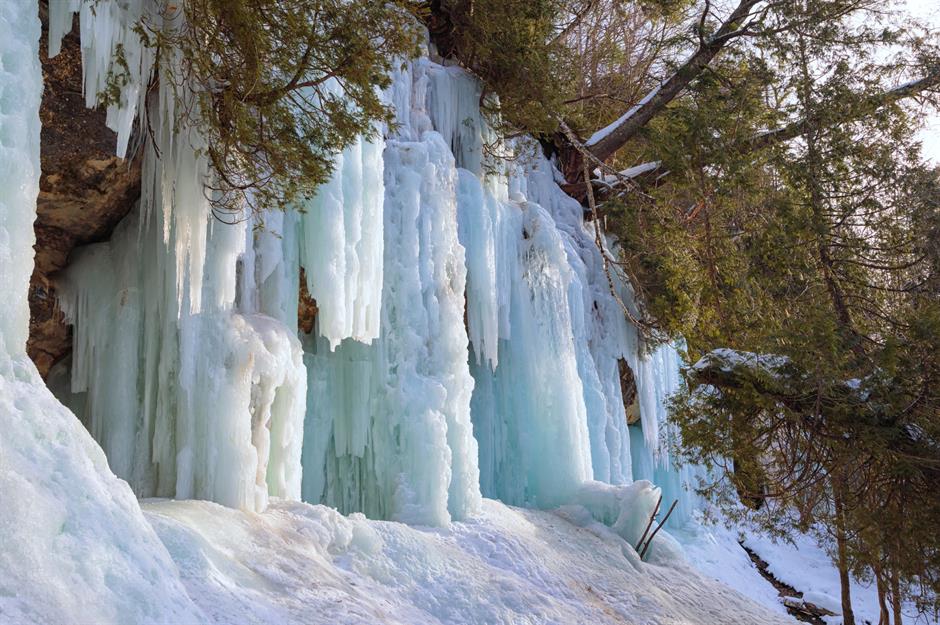
Come winter, the gorgeous waterfalls at Pictured Rocks National Lakeshore, Michigan, quickly turn to ice in the cold conditions. This makes for a fantastic climbing opportunity for adventurous visitors, and with the right equipment and training or a qualified guide you can scale the 30-foot-tall (9m) frozen curtains between Musings Falls and Sand Point.
Watch wild, swimming horses in Maryland and Virginia
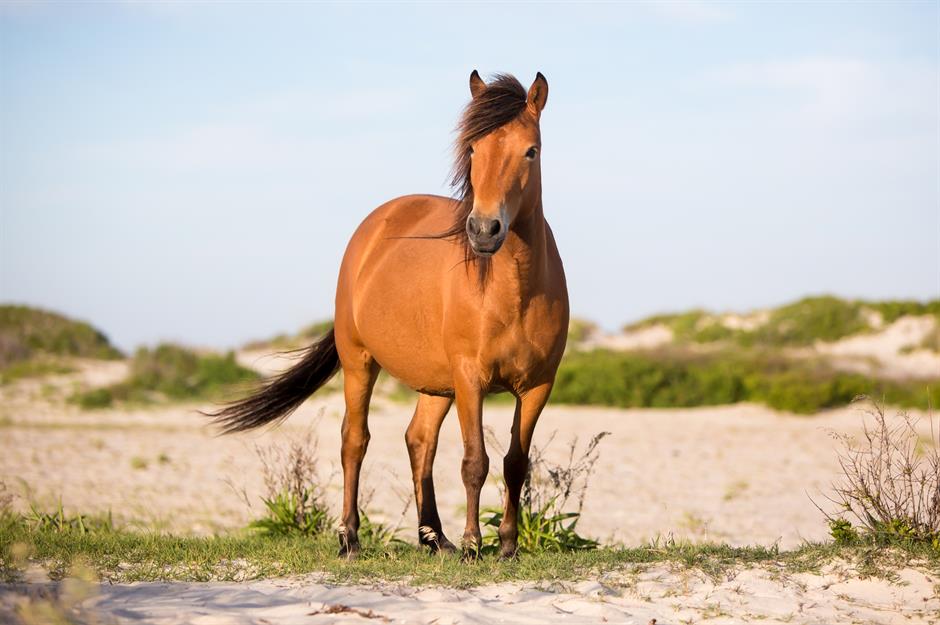
Eagles, bison and bears are among the better-known wildlife you can spot in America's national parks, but did you know there are also wild horses? On Assateague Island National Seashore, around 150 feral horses (they're 'feral' rather than 'wild' because they're descended from domesticated animals) roam free. You can observe them from a distance (definitely don't feed them, it could seriously harm their health), and once a year watch them swim during the Chincoteague Wild Pony Swim.
Find out more about the amazing animals you can see in America's national parks
Go on a yoga retreat in California
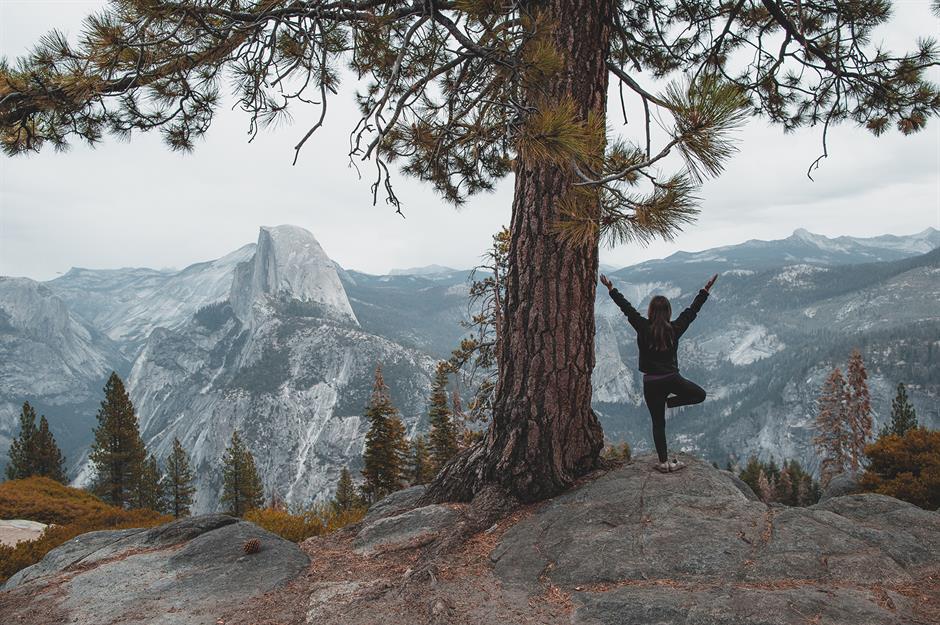
Most people visit national parks to find gorgeous landscapes, intriguing history and exciting wildlife. 'Relaxing' is rarely the goal, but if you're looking for something more reflective, book onto a Balanced Rock retreat. Their yoga programmes involve plenty of trekking, meditating and stretching in the great alpine outdoors of Yosemite National Park, and are occasionally paired with creative activities like writing.
Camp near America's deepest lake in Oregon
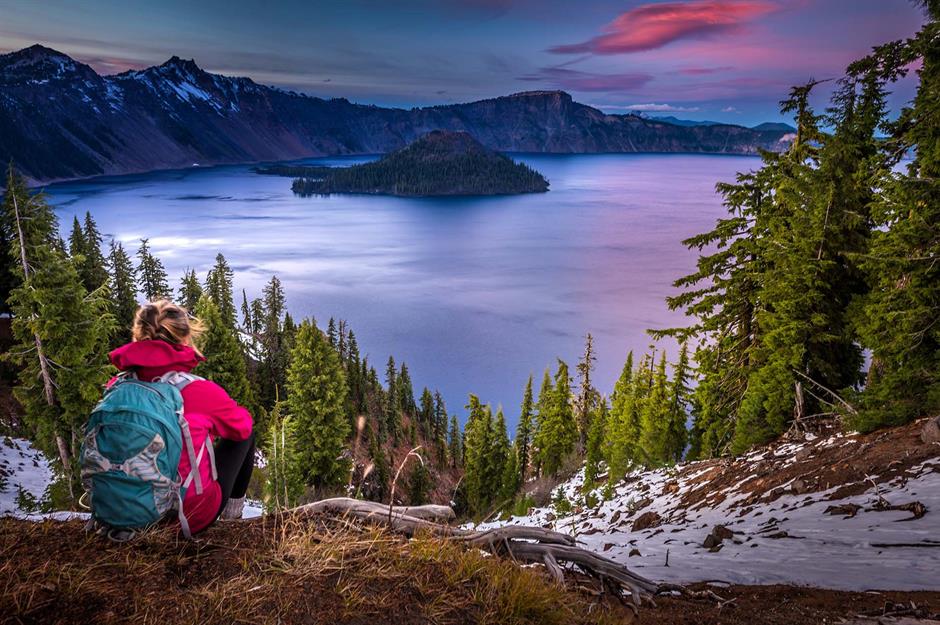
Formed 7,700 years ago, this awe-inspiring crater lake, in the aptly-named Crater Lake National Park, is the deepest in the United States. Surrounded by 2,000-foot-high (610m) cliffs, it's an exceptional place for hiking with spectacular views all around. You can camp nearby at Lost Creek Campground which has a trail leading to the rim of the enormous crater – perfect for a sunrise hike to catch the view.
Scuba dive through a kelp forest in California
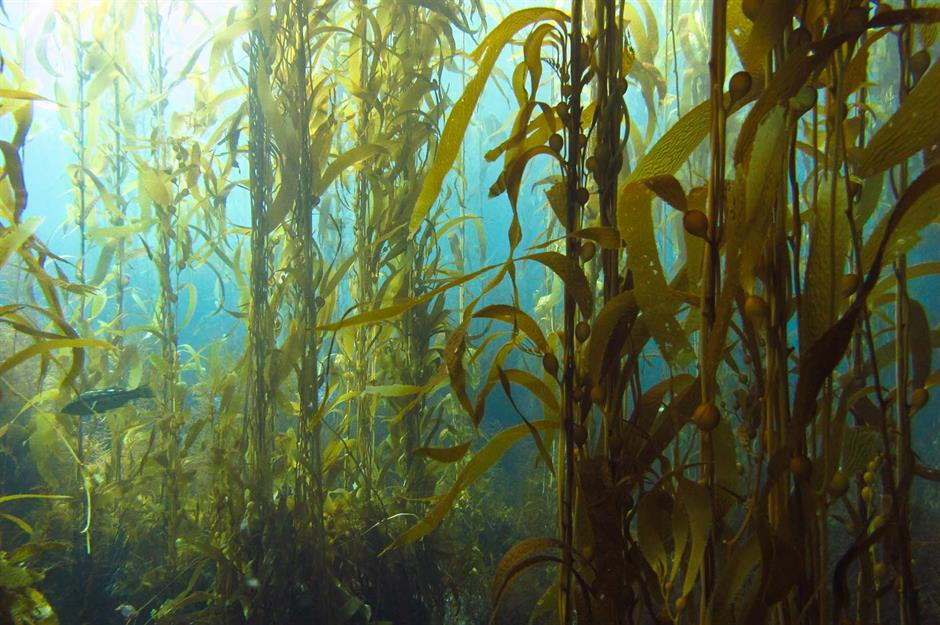
Sand-board in Colorado
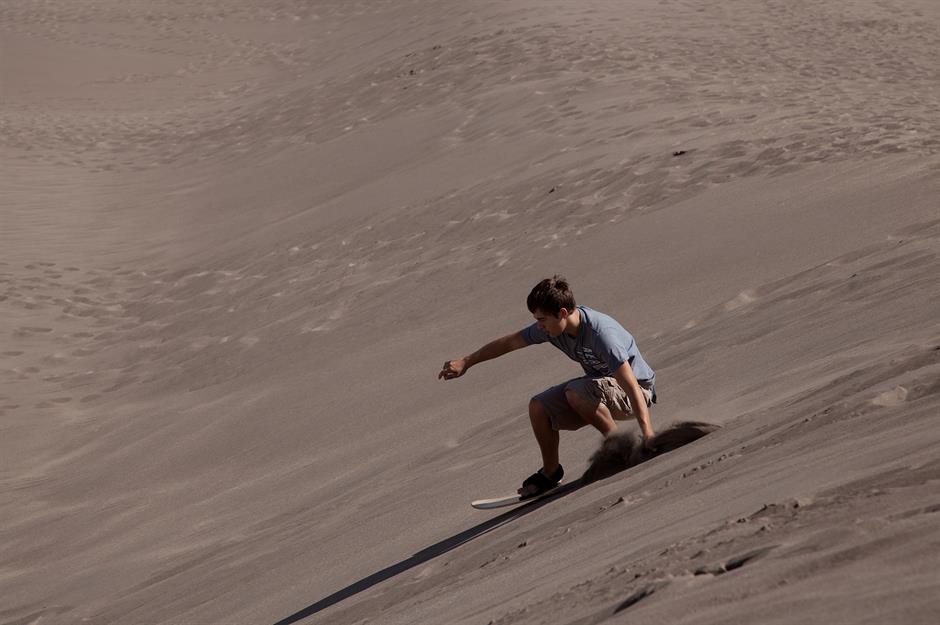
You might not expect to find a desert in the middle of the Rocky Mountains, and yet the Great Sand Dunes National Park and Preserve is plonked in the middle of the Sangre de Cristo Range, overlooked by Crestone Needle and Blanca Peak. Here you can try your hand at sand-boarding – the desert equivalent of snowboarding – and hurtle down dunes of up to 750 feet (230m) tall.
See whales and dolphins in Alaska
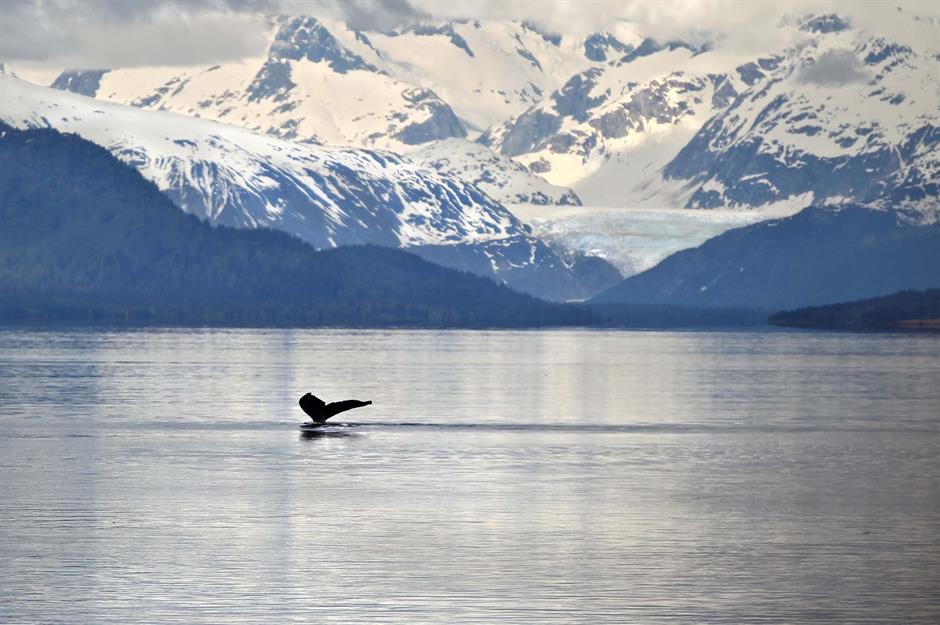
Glacier Bay National Park and Preserve is simply stunning. The snow-capped mountains, glassy waters, spectacular glaciers... it's a true pristine wilderness. But beneath the surface of the Gulf of Alaska lives a magnificent creature – the humpback whale. They come into the bay for food and are most prolific in June through August, so come on a summer cruise and you might just see one breaching. Up to 50 feet (15m) long, they come to the surface to expel a breath of air, which bursts out at around 300 miles per hour (483km/h).
Snorkel among shipwrecks in Florida
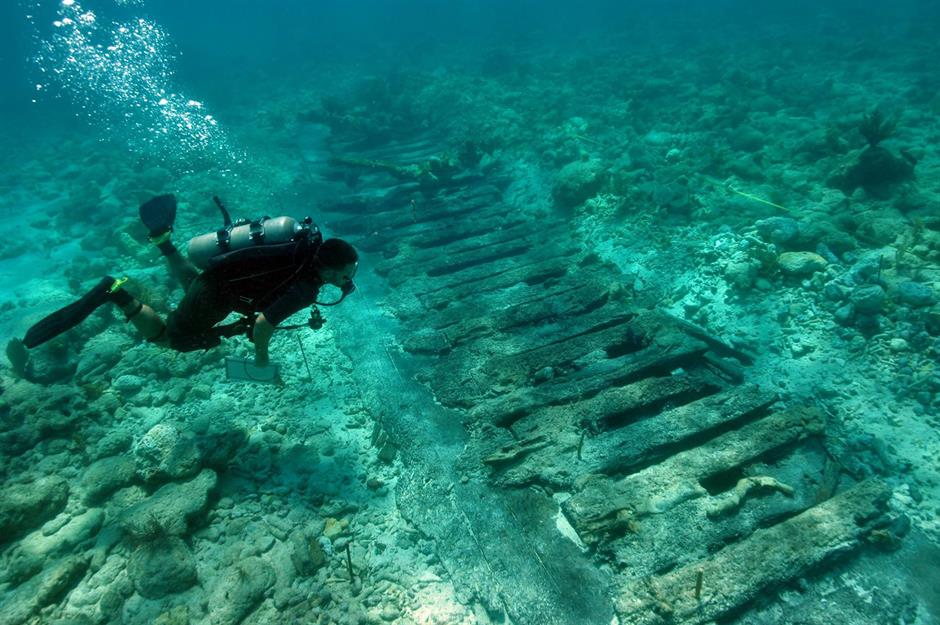
Biscayne National Park has a Maritime Heritage Trail, an underwater route that covers six shipwrecks off the coast of Florida. Only accessible via boat, three of the wrecks are easily explored by snorkelling while another three are better for experienced scuba divers. The ships mostly ran aground or sank during the 1800s, and range from wooden sailing boats to steel steamships.
Be first in the US to see the sunrise in Maine
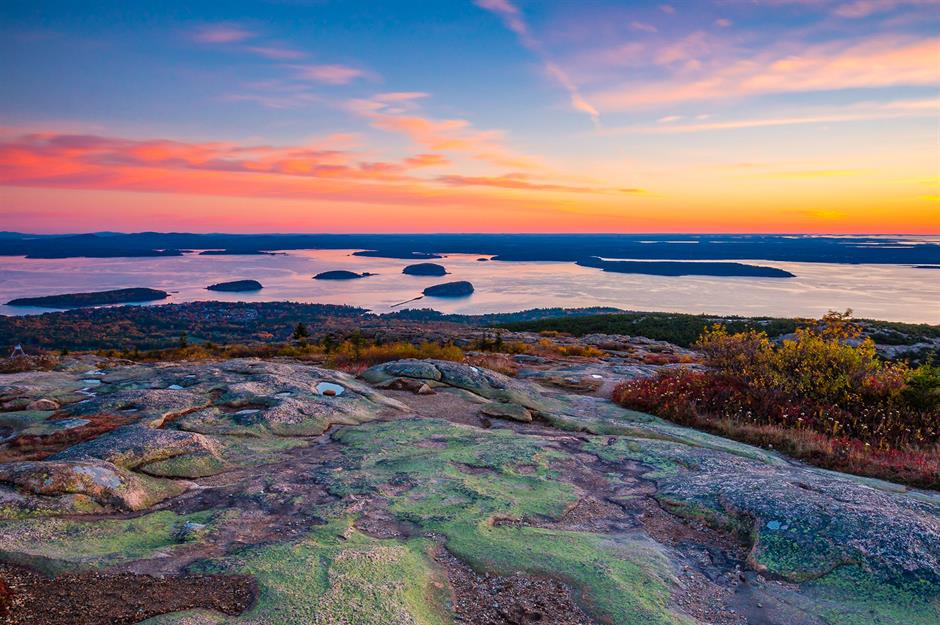
Watching the first light cast shadows across the landscape and illuminate the world has a spellbinding effect no matter where you are. But head to Cadillac Mountain in Acadia National Park, Maine, and you'll be one of the first people in America to see the sun that day. Thanks to the high vantage point – more than 1,500 feet (450m) high – and its placement on the northeast coast, it's one of the first places in the United States that the sun's rays reach. The view is well worth the early wake-up call.
Become an artist-in-residence across the US
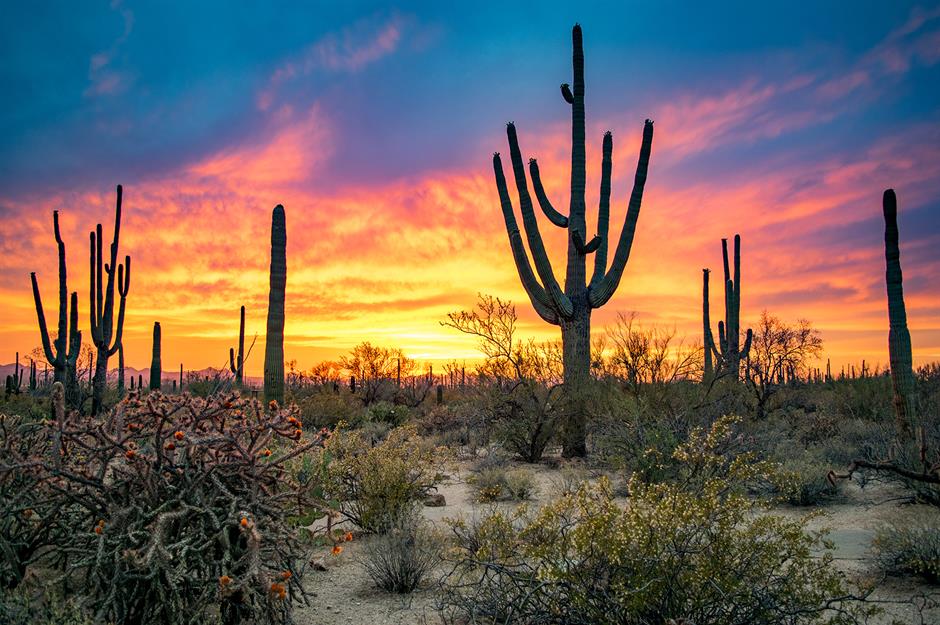
If you're serious about art, be it painting, sketching, writing or music, and you want to get your creative juices flowing somewhere truly inspiring, check out the National Park Service's artist-in-residence programmes. There are more than 50 across the country – the parks each have their own version – and you could find yourself staying within the boundaries of a protected park for up to four weeks.
Explore a palace in Colorado

With no royal family, the USA isn't blessed with a wide range of historic palaces. But there is one in Colorado that belonged to the Ancestral Puebloans and is well worth a visit. Mesa Verde National Park's Cliff Palace may be in ruins now but it was an impressive sprawl of rooms during its heyday as an administrative capital from 1190 onwards. Today you can explore it on ranger-guided walks to see hand-painted murals and learn how the Ancestral Puebloans once lived.
Go whitewater rafting in Arizona or Montana
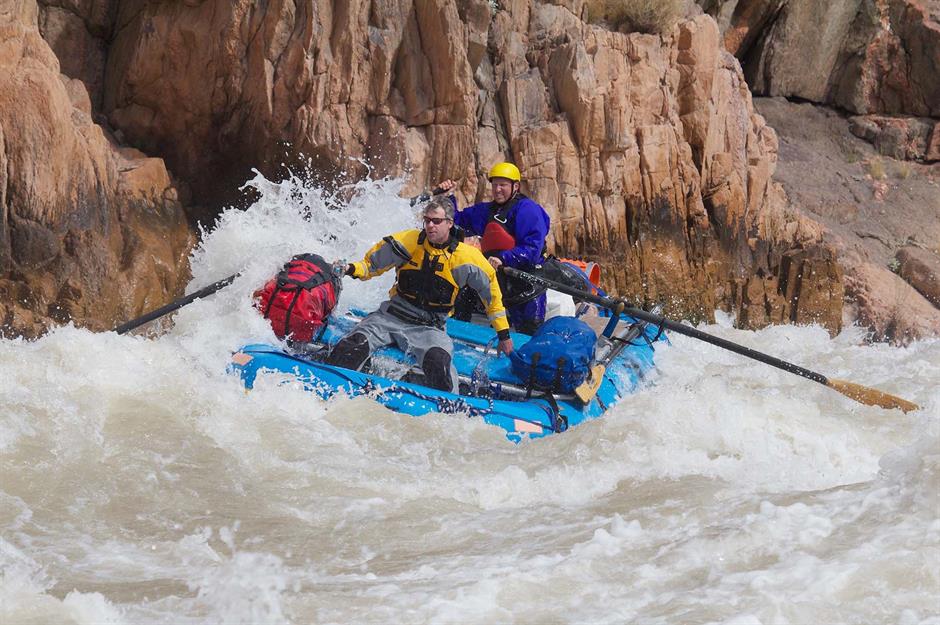
If an adrenaline fix is what you're after, whitewater rafting is the perfect source. Eschew the hiking trails and viewing platforms of Arizona's Grand Canyon National Park for a river rapids adventure, providing thrills as well as a viewpoint from which to appreciate the enormity of the canyon. Or, bump over rocks and down small waterfalls in Glacier National Park's Flathead River in Montana. It's one of the coldest rivers in the country but the gorgeous views of surrounding mountains are worth the risk of falling in.
See a critically endangered bird in California
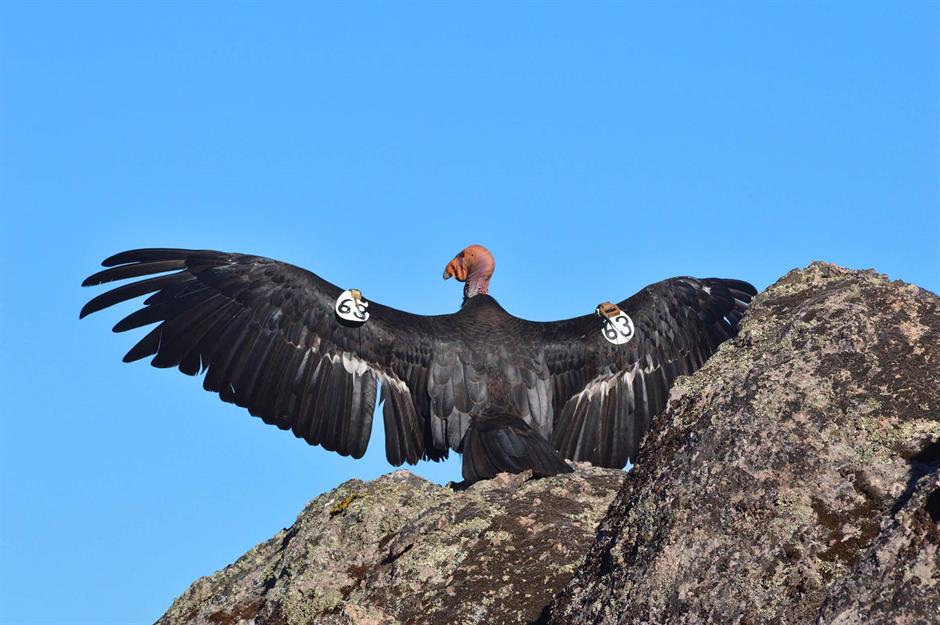
California condors, which have the widest wingspan of any bird in North America (up to 10 feet), were declared extinct in the wild in 1987. However, a release programme in Pinnacles National Park helped the majestic animals climb back from the brink, and will hopefully help them thrive again throughout the area in the future. There are now at least 86 wild condors which can be seen circling the skies in Pinnacles. You can help the conservation efforts by reporting sightings – any information on the whereabouts of the condors is useful for the tracking team.
See a military fort in Florida
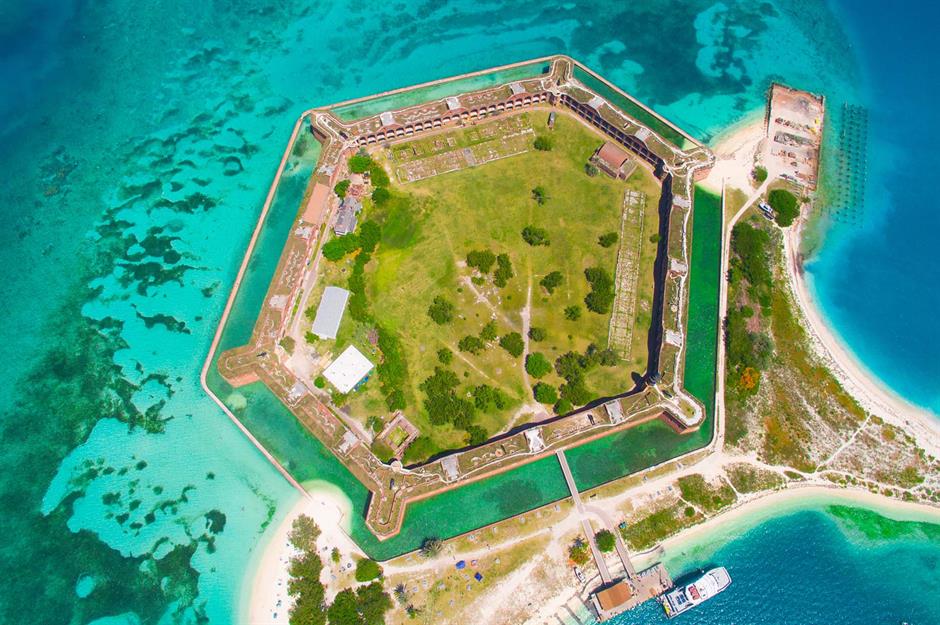
National parks aren't all about nature. In Florida's Dry Tortugas National Park, you'll find an enormous, historic military barracks. Fort Jefferson may have never seen any action at its high brick walls – it's said there are 16 million bricks making up this behemoth – but it was still home to 2,000 people during the 1860s. Living conditions within the fort were less than ideal, and disease ran rife. You'll hear tales of the people who lived and died there on a guided tour.
Climb the world's tallest trees in California
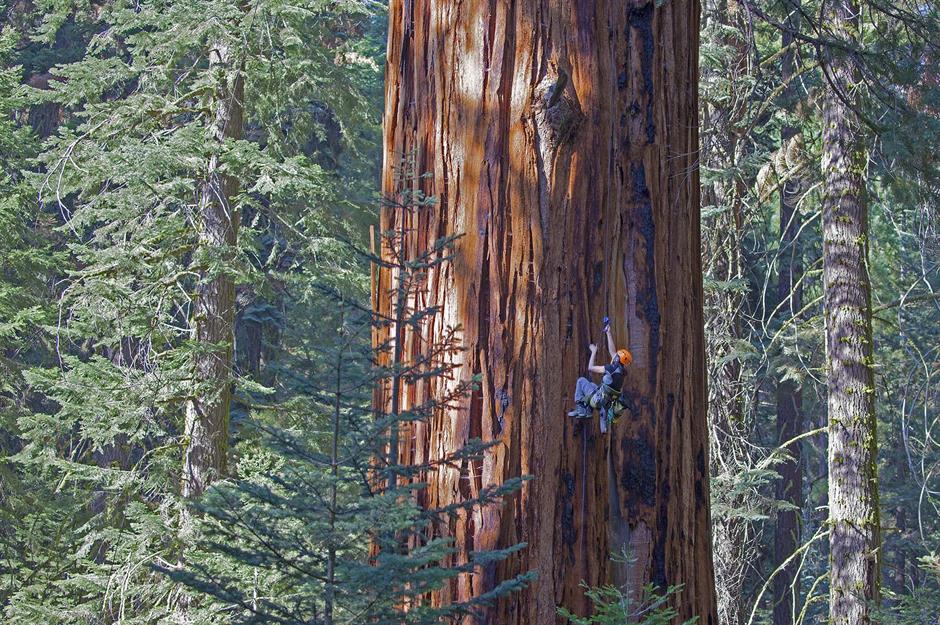
Climbing trees just got serious. If the big kid in you is yet to be satisfied, head to Redwood National and State Parks with Pelorus, a specialist experiential travel operator. It'll team you up with researchers and send you on the climb of a lifetime as you're trained and harnessed up to scale the giant California sequoias and redwoods. Reaching up to 300 feet (90m) tall, this will put any of your childhood records to shame and no doubt provide exceptional views of the surrounding forest and beyond.
Play golf in California
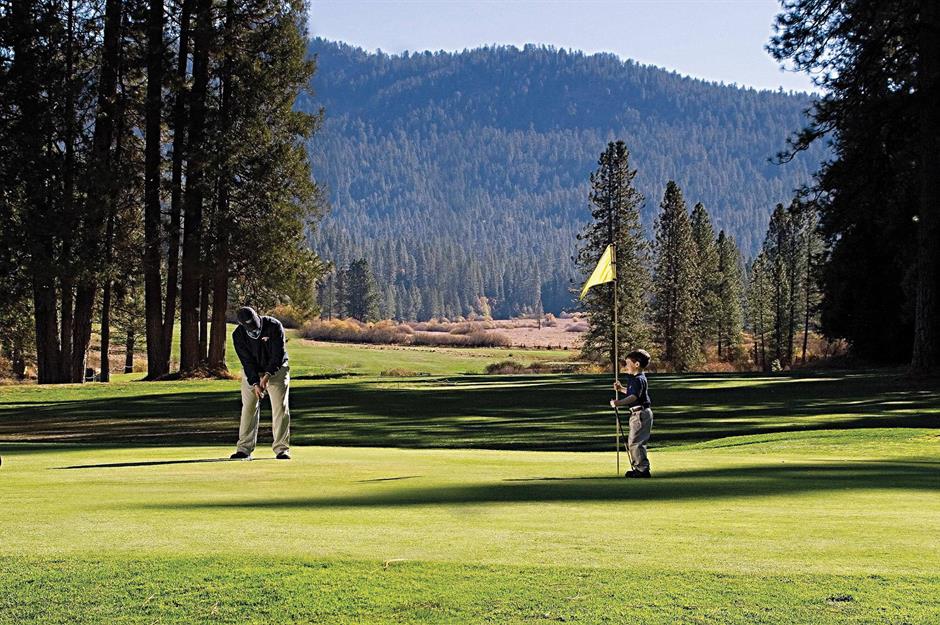
Golf probably isn't the first sport you'd think to try in a US National Park. Hiking, mountain biking or even rock climbing might seem more appropriate, but inside Yosemite National Park the Wawona Golf Course is a stunning place to play a round or two. Its nine holes are set among gorgeous tall pines, with pristine lawns and beautiful views of the park. It's not uncommon to see coyotes on the course which come from the surrounding forests.
Read on to learn how America's best-known national parks got their names
Comments
Be the first to comment
Do you want to comment on this article? You need to be signed in for this feature